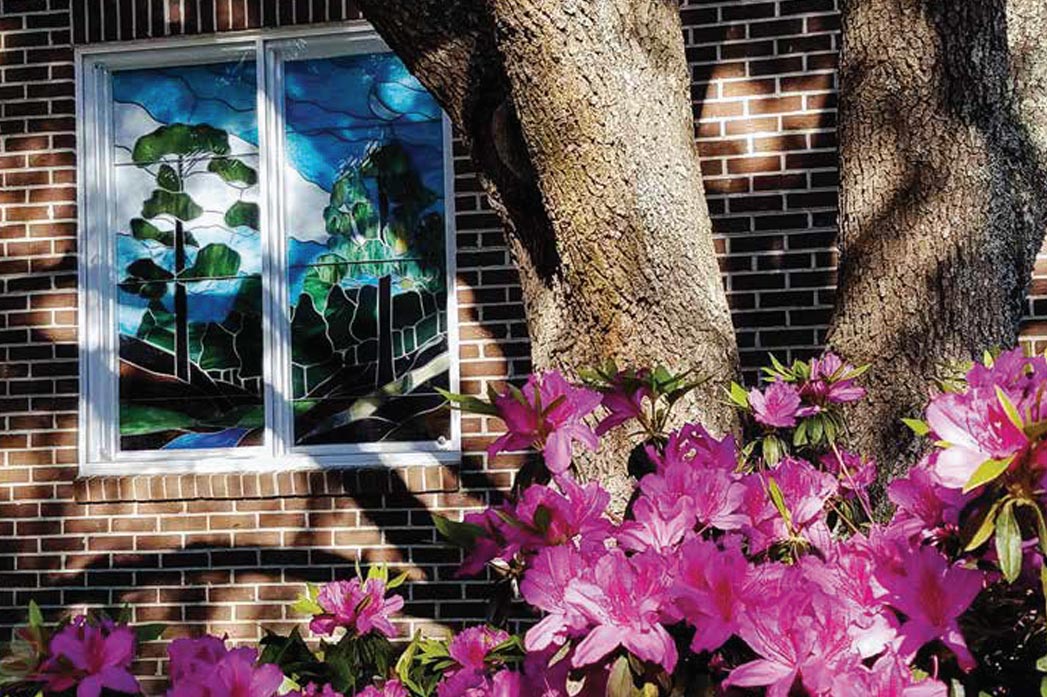By: C. Michelle Bryant & told by Linda Ensor of the Summerville/Dorchester Museum
In our exploration of Summerville, we also discovered a little hidden nugget known as the Summerville Dorchester Museum. Located at 100 E. Doty Ave., Summerville, SC 29483, the museum is a very diverse, historical and welcoming community as you experience with every step of discovery. The Mormons laid the brick walk in the garden, the Sahl Alexander house was built by the Jewish community and the museum itself is run solely by volunteers ages 10 to 35. It is open 10 a.m. to 4 p.m. Tuesdays through Saturday. They offer tours, cultural guides and lectures on topics such as archeology and rich local history. There are children’s programs on the third Saturday with snake and reptile programs, fossil discoveries and more. The museum is currently working on a coloring book created by a 16-year-old digital artist volunteer named Eve.
They have a research room open to the public by appointment where people can come and research their surroundings, maps, properties and more. They also host a genealogy group that meets once a month. In addition, they are partnering with the Flowertown Theatre for an upcoming production of Lynwood.
Within the museum, you will find historic artifacts and monumental pieces of the history and culture of Summerville and the Lowcountry. We found the data about the Maroons incredibly interesting.
According to Bo Petersen of the “Post and Courier” dated October 9, 2016, the Maroons had nowhere to go but the swamp. Often, they had run at night, hungry and wading a malarial swamp haunted by deadly beasts and fierce native tribes. The best they could hope was to keep somewhere close to their people and not get caught. Slaves who escaped from Ashley River and other Charleston-area plantations didn’t run to the Underground Railroad because there wasn’t one in the region.
Hundreds at a time camped in Cypress Swamp or othercoastal wetlands. That long-overlooked saga of Lowcountry life is coming to light as historians start to piece together the missing links in the lives of antebellum blacks, a story long told too simply as slavery. The Maroons who got away were a larger presence in Charleston than might be suspected.
“These are stories of being in freedom in the [antebellum] black community,” said Ken Battle, Summerville Museum board chairman. “They would rather live in the swamp and live free than be tied up on the plantation. We need to know that story. People are really interested in this. It’s something other than slavery. When you start talking liberty and success it ignites passion.”
As well as Catherine B. Smith in 1834. Her mother Martha was a full-blooded Indian, and her father was white, making Catherine a mulatto. This heritage would later influence her decisions and soften her heart to those around her who were less fortunate. Catherine grew up in the Charleston area and became a very successful dressmaker with a business on King Street. She later met and, it is assumed, married Richard S. Springs, a white man and a dry goods merchant who owned a store on Hutchinson Square in Summerville, South Carolina. Interracial marriages were not registered during that time period, so it is difficult to determine if they married. Catherine moved her business to Summerville and became well known for her hats. Catherine and Richard had a son who they named Francis. Richard died in 1889 at the age of 71, willing all his possessions and property to Catherine for “services for years as a housekeeper.”
A successful business woman in a time when men predominately ran the businesses and women kept the homes, Catherine became a wealthy land owner. She was extremely generous with her properties. Catherine had a heart for the Summerville Indians and provided space for St. Barnabas Mission on property, which years later was a hospital complex. St. Barnabas was a combination clinic, school and church under the auspices of St. Paul’s Church. The mission’s primary goal was to help the Summerville Indians and poor whites who often were overlooked and discriminated against. The Indians were mixed-race descendants of local native tribes.
Catherine helped build or gave the property for several buildings that still stand today, including the Church of the Epiphany on Central Avenue, where a monument was erected in memory of Catherine Springs beside the church, the old post office on Hutchinson Square, as well as the Bank School that provided some of the earliest public education for blacks. Her money continues to help fund the little red door today. The museum encourages Lowcountry natives to bring your story and add to the Black history exhibit and contribute to other aspects of the museum as it grows.
As you can see, The Dorchester Summerville Museum offers fun, excitement and education among other things. They are continually seeking volunteers, historians, educators, anyone with talent or ideas, etc. There is always a need for volunteers to work in the museum itself, manual labor, landscaping, computer work, history background and so forth. They are run completely on monetary donations and memberships. An individual membership is only $15 and a family is $20. This includes free museum tours all year long, free access to lectures and much more. For more information on the museum, donating or volunteering call (843) 875-9666 or visit the website at www.summervilledorchestermuseum.org.


